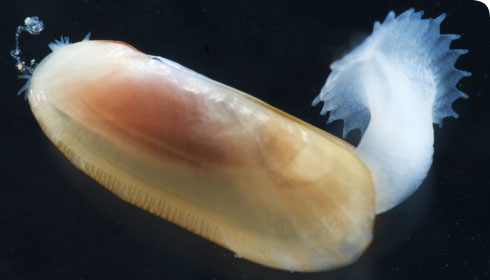Solemya velesiana
Solemya velesiana is a marine bivalve mollusc from Australia.
It belongs to the family Solemyidae - one of the most ancient groups of bivalves with fossil species recognised from the early Ordovician period, 475 million years ago.
These bivalves have thin flexible shells. The animal is very active and moves with its large extendable foot that is fringed with tentacles. Solemya can swim using jet propulsion by muscle contractions that rapidly close and open the shell.
Solemya spp are dependent on bacteria that live in their gills for survival. The bacteria convert dissolved hydrogen sulphide in the surrounding water into carbohydrates that the bivalves absorb for nutrition.
Species detail
-

Distribution
Solemya burrows in the muddy sands of seagrass beds. Find out where.
-

Biology
Solemya species have bacteria living in their gills that allow them to feed. Find out more.
-

References
Get more reference information on Solemya velesiana.
Images
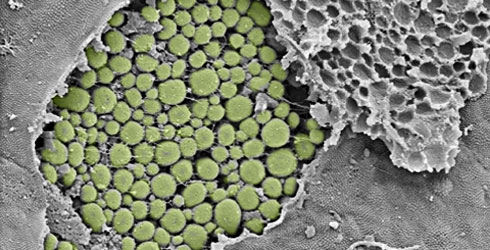
Piece of the outer surface of a gill leaflet peeled back to reveal the tips of the sausage-shaped symbiotic bacteria, false coloured green.
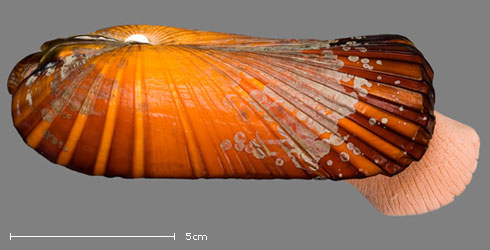
A species of Acharax - a genus closely related to Solemya that lives in deep water around hydrocarbon seeps
© J Turner, National Museum of Wales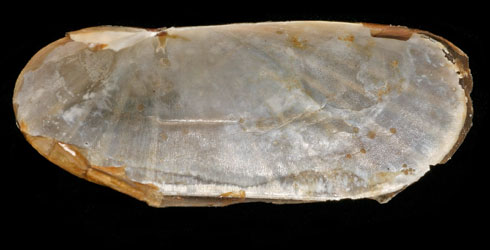
Shell of Solemyarina velesiana - the thin shells have a high organic content and become very fragile and brittle when dried as in most museum collections.
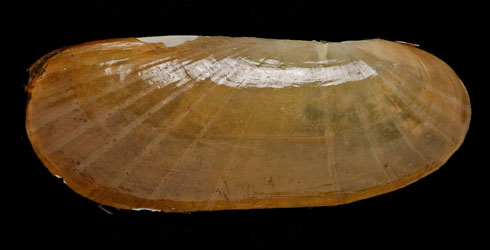
Shell of Solemyarina velesiana - the thin shells have a high organic content and become very fragile and brittle when dried as in most museum collections.
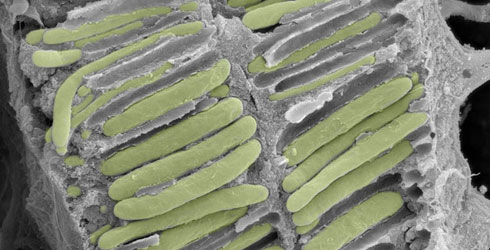
Electron microscope image of bacteria in the gill of Solemya. Bacteria are around 8 microns long - 8 thousands of a millimetre. The bacteria are false coloured green in this image.
About the author
Author's quote
"I chose Solemya velesiana because we carried out research on this bivalve while working in Moreton Bay, near Brisbane. As well as being one of the most ancient groups of clams with a fossil record extending back 470 million years, they are remarkable for the symbiosis with bacteria living in the gills."
